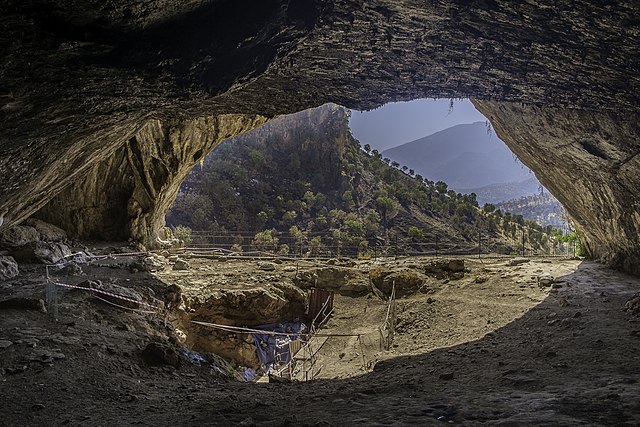Shanidar Cave is an archaeological site on Bradost Mountain, within the Zagros Mountains in the Erbil Governorate of Kurdistan Region in northern Iraq.
Neanderthal remains were discovered here in 1953, including Shanidar 1, who survived several injuries, possibly due to care from others in his group, and Shanidar 4, the famed 'flower burial'. Until this discovery, Cro-Magnons, the earliest known H. sapiens in Europe, were the only individuals known for purposeful, ritualistic burials.
The entrance to Shanidar Cave
Shanidar I's skull and skeleton, c. 60,000 to 45,000 BCE. Iraq Museum
Skeletal remains of Shanidar II, c. 60,000 to 45,000 BCE. Iraq Museum
Inside the Shanidar Cave
The Zagros Mountains are a long mountain range in Iran, northern Iraq, and southeastern Turkey. The mountain range has a total length of 1,600 km (990 mi). The Zagros range begins in northwestern Iran and roughly follows Iran's western border while covering much of southeastern Turkey and northeastern Iraq. From this border region, the range continues southeast under also the waters of the Persian Gulf. It spans the southern parts of the Armenian highlands, the whole length of the western and southwestern Iranian plateau, ending at the Strait of Hormuz. The highest point is Mount Dena, at 4,409 metres (14,465 ft).
SRTM shaded relief anaglyph of Zagros Mountains
The Zagros Mountains from space, September 1992
Glaciers on Dena
Ancient cobblestoned pathway in Zagros, Behbahan








